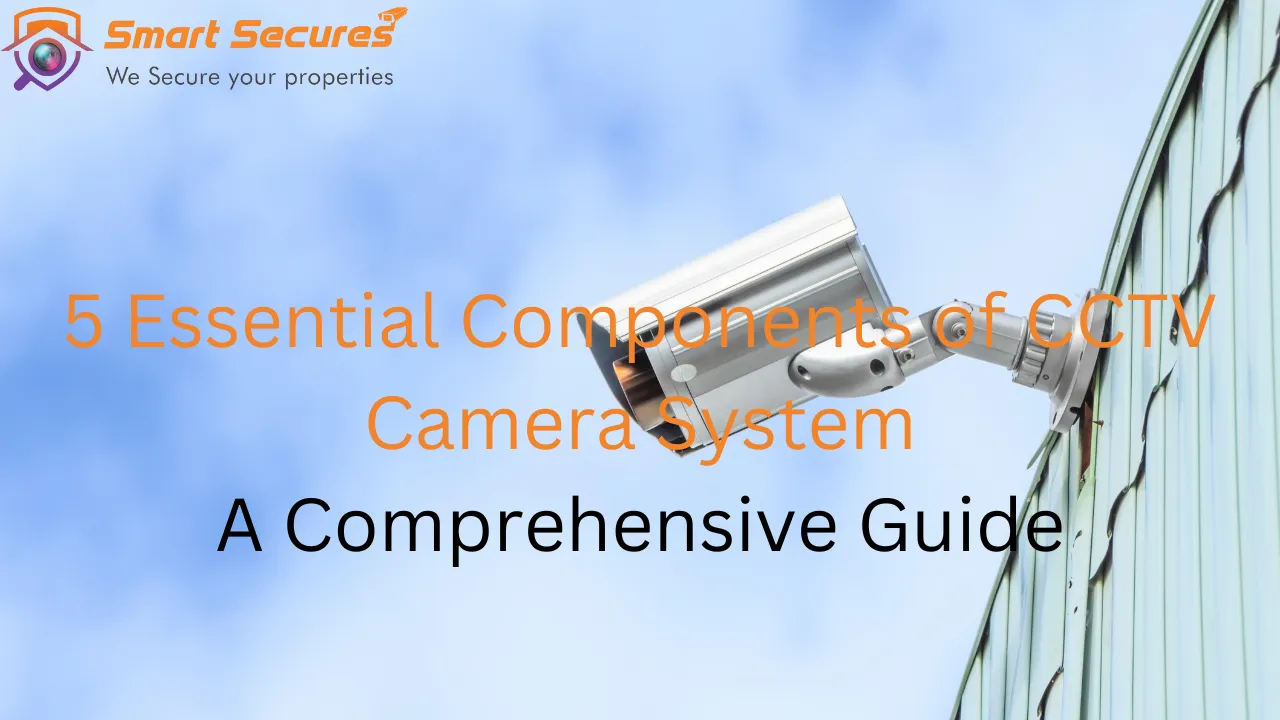Home > Blog > 5 Essential Components of CCTV Camera System: A Comprehensive Guide
Regarding security, few solutions offer the peace of mind that a well-setup CCTV (closed circuit television) camera system can provide.

Regarding security, few solutions offer the peace of mind that a well-set-up CCTV (closed-circuit television) camera system can provide. These systems have become essential for monitoring properties, deterring crime, and ensuring overall safety in both residential and commercial settings. But what exactly makes up a CCTV system? In this article, we’ll break down the five critical components that make up a CCTV system and how each plays a pivotal role in ensuring your safety.
Before diving into the essential components, let's quickly touch on what a CCTV camera system is. At its core, CCTV refers to a system of cameras and related equipment that transmit signals to a limited set of monitors or recording devices. The signals aren't broadcast publicly, hence the term "closed circuit."
CCTV systems are commonly used for surveillance purposes and are an effective way to monitor and record activities in and around a specific location. By understanding the components that make up this system, you’ll be able to make an informed decision when setting one up.
The camera is undoubtedly the most critical component of any CCTV system. It is responsible for capturing footage of the environment and transmitting it to the recording devices or monitors. There are different types of CCTV cameras to choose from, each designed for specific purposes.
Once the camera captures footage, it needs to be stored or transmitted. This is where a digital video recorder (DVR) or network video recorder (NVR) comes into play.
Cabling is the backbone of a CCTV system, ensuring that data can travel from cameras to recording devices or monitors without interruption.
A CCTV system cannot function without a reliable power source. Each camera, recorder, and other equipment requires power to operate.
Monitors are the screens where you can view live or recorded footage from your CCTV cameras. Depending on the number of cameras, you may need multiple monitors or a single multi-screen display.
A CCTV camera system is only as strong as its weakest component. By understanding the role and importance of each part—from cameras and recorders to cables, power sources, and monitors—you can ensure that your system operates smoothly and effectively. When setting up a CCTV system, it’s essential to choose components that suit your specific needs, whether you're looking for a basic system for home security or a more robust solution for a commercial property.
The number of cameras depends on the area you wish to monitor. It’s recommended to place cameras in key locations, such as entrances, exits, and blind spots.
Yes, modern systems, especially those with NVRs and IP cameras, allow for remote viewing via smartphones or computers.
The storage duration depends on your storage device (DVR or NVR) and the recording settings (e.g., continuous or motion-based recording). A typical setup may store footage for 1-2 weeks.
Wireless CCTV systems are easier to install but can suffer from interference or range issues. Wired systems tend to be more reliable for larger setups.
Yes, most modern systems are scalable, meaning you can add more cameras as needed. Just ensure that your DVR or NVR can handle the additional cameras.

5,852 reviews